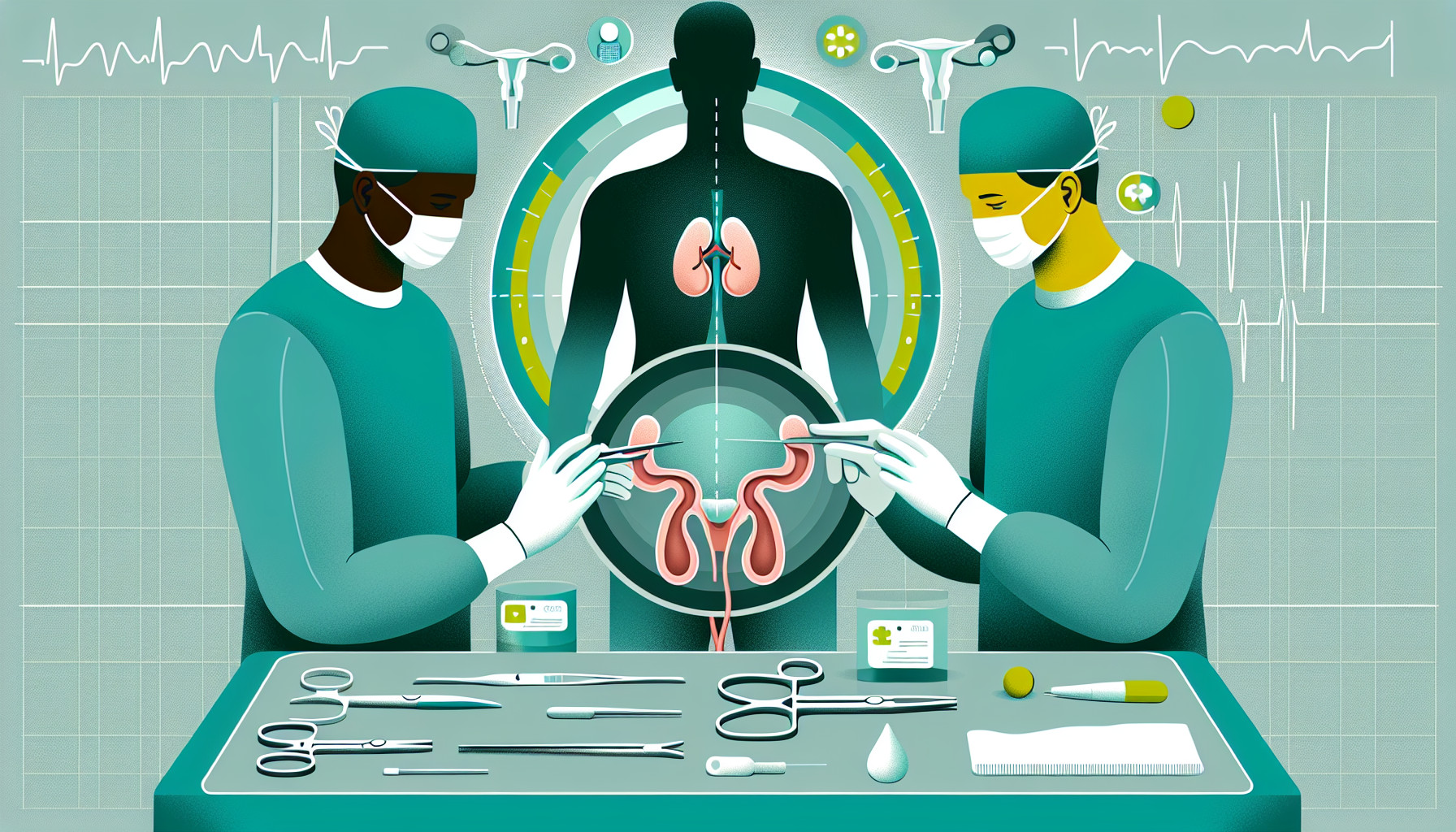Our Summary
This research paper is about a procedure often used on patients with bladder cancer that has spread into the muscle or which cannot be removed. This procedure involves removing both the bladder and the lymph nodes in the pelvis. The researchers have found that removing the lymph nodes can help prevent the cancer from coming back and can improve the patient’s chances of survival. But they are still unsure about how many lymph nodes should be removed for the best results. Some studies suggest that removing more lymph nodes can be beneficial, but a recent trial did not find any difference in survival rates between patients who had more lymph nodes removed and those who had fewer. The researchers are waiting for the results of another similar study to see if it can provide more clarity. The paper concludes that the benefits of removing more lymph nodes might be limited and that other factors, like chemotherapy, could also play a role in how well patients do after surgery.
FAQs
- What is the procedure often used on patients with bladder cancer that has spread into the muscle?
- How can removing lymph nodes improve a patient’s chances of survival?
- Is there a specific number of lymph nodes that should be removed for the best results in treating bladder cancer?
Doctor’s Tip
One helpful tip a doctor might tell a patient about cystectomy is to follow their post-operative care instructions closely, including taking prescribed medications, attending follow-up appointments, and following a recommended diet and exercise plan. It is also important to report any unusual symptoms or complications to the doctor promptly. Additionally, maintaining a healthy lifestyle, including quitting smoking and avoiding excessive alcohol consumption, can help improve the success of the surgery and overall recovery.
Suitable For
Patients who are typically recommended for cystectomy are those with bladder cancer that has invaded the muscle layer of the bladder, known as muscle-invasive bladder cancer, or those with non-muscle invasive bladder cancer that has recurred after treatment. In addition, patients with a high risk of the cancer spreading or recurring, such as those with aggressive tumor characteristics or a history of non-invasive bladder cancer that has progressed to muscle invasion, may also be recommended for cystectomy.
Other factors that may influence the recommendation for cystectomy include the patient’s overall health and ability to undergo surgery, as well as their preferences for treatment. Patients who are not candidates for other treatments, such as chemotherapy or radiation therapy, may also be recommended for cystectomy.
It is important for patients to discuss all treatment options with their healthcare providers, including the potential risks and benefits of cystectomy, in order to make an informed decision about their care.
Timeline
- Before cystectomy:
- Patient is diagnosed with bladder cancer that has spread into the muscle or cannot be removed.
- Patient undergoes various tests and consultations to determine the best course of treatment.
- Patient may receive chemotherapy or radiation therapy to shrink the tumor before surgery.
- Patient discusses the risks and benefits of cystectomy with their healthcare provider.
- Surgery date is scheduled and patient prepares for the procedure.
- After cystectomy:
- Patient undergoes surgery to remove the bladder and lymph nodes in the pelvis.
- Patient stays in the hospital for a few days to recover from the surgery.
- Patient may experience side effects such as pain, fatigue, and changes in bowel or urinary function.
- Patient may need to use a urinary diversion method, such as a urostomy bag, to manage urine.
- Patient undergoes follow-up appointments and tests to monitor for any signs of cancer recurrence.
- Patient may need additional treatments, such as chemotherapy or immunotherapy, depending on the stage and aggressiveness of the cancer.
- Patient adjusts to life without a bladder, making lifestyle changes and learning to manage any physical or emotional challenges.
- Patient continues to receive support from their healthcare team and loved ones to help them cope with the changes and challenges of living without a bladder.
What to Ask Your Doctor
- How many lymph nodes will be removed during the cystectomy procedure?
- What is the rationale for removing a specific number of lymph nodes?
- Are there any potential risks or complications associated with removing a larger number of lymph nodes?
- How will removing more lymph nodes affect my recovery time and overall quality of life?
- Are there alternative treatment options to consider besides removing more lymph nodes?
- Will removing more lymph nodes improve my chances of survival compared to removing fewer lymph nodes?
- Are there any specific factors that would indicate removing more lymph nodes is necessary in my case?
- How will removing more lymph nodes impact my ability to receive other treatments, such as chemotherapy, after the cystectomy?
- Are there any ongoing clinical trials or research studies investigating the optimal number of lymph nodes to remove during cystectomy?
- Can you provide more information on the potential benefits and limitations of removing more lymph nodes based on the current research and evidence available?
Reference
Authors: Crocerossa F, Autorino R, Carbonara U, Cantiello F, Damiano R, Mir MC. Journal: Curr Opin Urol. 2022 Nov 1;32(6):607-613. doi: 10.1097/MOU.0000000000001035. Epub 2022 Sep 13. PMID: 36101521
